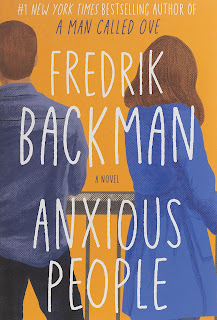Across That Bridge: Life Lessons and a Vision for Change
by John Lewis, United States Congressman
This book has been sitting on my shelf, waiting, for weeks.
I suppose because I expected it to be a heavy read, though the book itself is small. There are
simply seven chapters – Faith, Patience, Study, Truth, Peace, and Love. It is
well organized and flows easily from one section to another.
It is at once memoir, a bit of a legislative lesson, as well
as bringing history to life through what Lewis learned, observed, and
experienced. The section on patience uses the example of the slow progress in
creating a national archive honoring the contributions of African Americans to
the U.S., from 1915, through the various ups and downs, committees created and
setbacks, to its’ fruition in the National Museum of African American History
and Culture that opened in 2015, one hundred years later. Patience, and
persistence, indeed.
I found myself noting down many passages but it was hard to limit my quotes, because so much was quote worthy. It would have been simpler if it were my own copy and I could underline passages, but I'm afraid half the book would be underlined. I have a feeling I'll be re-reading it in the future.
Lewis begins with the intention that the book is to help
those dreamers from getting lost in despair, and for those “faithfully readying
themselves for the next push for change.”
I deeply appreciated that sentiment. It has been a hard year
for all who have watched sadly as the divisions in our country deepened.
“It is for all those willing to join in the human spirit’s
age-old struggle to break free from the bondage of concepts and structures that
have lost their use.”
There is a fascinating duality in this book as Lewis talks a
great deal about faith, which might seem like an old-fashioned notion, as well
as how to work patiently and consistently for change, but change is one of the
few constants in the world.
“The work of love, peace, and justice will always be
necessary, until their realism and their imperative takes hold of our
imagination, crowds out any dream of hatred or revenge, and fills up our
existence with their power.”
“Faith, to me, is knowing in the solid core of your soul
that the work is already done, even as an idea is being conceived in your mind
. . . Even if you do not live to see it come to pass, you know without one
doubt that it will be.”
I wish I had that belief. I have hope, but I fear there are
multiple ways we could go.
“Our faith rejected the notion that some people were inherently
better than others because of skin color, hair, height, build, education,
class, or religion, or any external attribute, and it embraced the equality and
divinity of all humanity.”
“We believed that if we stood together as one people,
gathered by our faith, determined to demonstrate the falsity of notions
coursing through the society around us, then we would have heavenly protection
against any evil that would befall us.”
It certainly seems to have sustained him in his work and
therefore served a purpose.
“Think about your greatest fear. Consider how you would feel
if your life required you to face what you fear the most every day. Ultimately,
if you survived the test, you would discover that what you feared actually had
no power over you, no power to harm you at all.”
At the same time, he acknowledges the very real danger they
were in – the possibility of a church being burned down around them, or never
coming out of a the Parchman maximum security prison in Mississippi alive.
“We emerged from Parchman believing we had the power to turn
even Mississippi around.”
“Informed activism requires reading the newspaper, tracking
bills through the Library of Congress’s THOMAS website, and watching
legislative debates on C-SPAN.”
When I read this, I thought, if that is true, then it would
seem only young, unmarried, and possibly unemployed people can engage. Who has
the time for that? I might have when I was in college, but then I was also
working 30 hours a week, going to school, and doing my homework. I would argue
we need people to distill the information, people we can trust. But he spoke to
that thought in the chapter on truth, saying that if people do not stay informed
and engaged then they are participating in being duped.
People have called him too naïve, but he responds to that
easily. “I see myself as a believer who has witnessed the evolution of what
others believed would never change.”
“We studied, we strategized, we organized, trained, and
prepared to take action. Most of what we accomplished grew out of years,
decades, and even centuries of groundwork….”
Lessons for us all, in every pursuit.
“It is so strange to me that we have learned to fly in the
air like birds, learned to swim in the ocean like fish, shoot a rocket to the
moon, but we have not yet learned how to live together in harmony with one
another.”
This book spoke very directly and personally to me, to my
thoughts and questions. It is a dense little book with a lot of information and
with a lot to contemplate. I got this book from my library but I’ve ordered a
copy for my own library so that I can have it on my book shelf – for further
contemplation of my own and for the ready opportunity for my daughter to read
it one day.






















